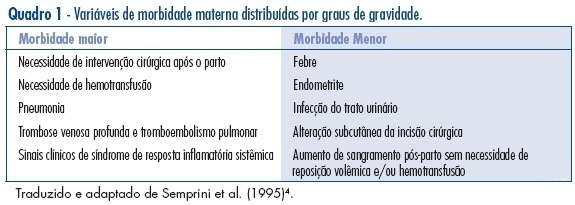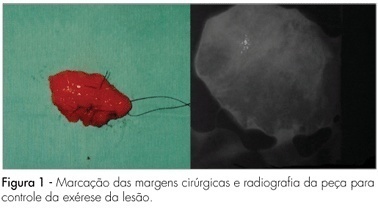Summary
Revista Brasileira de Ginecologia e Obstetrícia. 2007;29(5):248-252
DOI 10.1590/S0100-72032007000500005
PURPOSE: to analyze the isoflavone and estrogen effects on the postmenopausal quality of life. METHODS: this is a randomized and double-blind study with 79 postmenopausal patients, 12 months of amenorrhea, 40 years old or more and body mass index (BMI) above 30 kg/m². The participants were randomly divided into two treatment groups: GECP received orally two capsules, every 12 hours, one contained 0.625 mg conjugated equine estrogen and another placebo (n=33); GECS received two capsules of 150 mg extract of soy, with 60 mg isoflavone (n=32). Both treatments were administered for six months. The Quality Menopause Specific Questionnaire of Life was applied before and after one, three and six months of treatment. The parameters of gynecological cancer risk were evaluated. ANOVA and the Tukey test were used for data analysis. RESULTS: there was a reduction in the values of the vasomotor parameters after six months of treatment, 1.6±0.8 and 2.4±1.6, compared to before therapy, 4.0±2.2 and 4.2±2.3 in GECP and GECS, respectively. The psychological aspects showed reduction in values after six months of therapy, 2.5±1.2 and 2.9±1.4, compared to before treatment, 3.6±1.6 and 4.1±1.9 in GECP and GECS, respectively. Similar results were obtained on the physical aspects and in the sexual symptoms. CONCLUSIONS: isoflavones may positively act on life quality of postmenopausal women. This effect was similar to conjugated equine estrogen.
Summary
Revista Brasileira de Ginecologia e Obstetrícia. 2007;29(5):235-240
DOI 10.1590/S0100-72032007000500003
PURPOSE: to establish the prevalence of thrombophilic factors in infertile women. METHODS: a cross-sectional study was performed, in which infertile women, seen in a private clinic with investigation for thrombophilia were included, according to the protocol of the clinic, between March 2003 and March 2005, after the approval of the Research Ethics Committee of the Universidade Estadual de Campinas (UNICAMP). One hundred and forty-four infertile women without any liver disease were evaluated. Infertility is defined as one year of unprotected sexual intercourse without conception. The acquired and/or inherited thrombophilic factors investigated were: anticardiolipin antibody (aCL), lupus anticoagulant (LA), protein C deficiency (PCD), protein S deficiency (PSD), antithrombin III deficiency (ATD), presence of the factor V Leiden, mutation G20 210A in the prothrombin gene, and C677T mutation of methylene tetrahydrofolate reductase (MTHFR). RESULTS: the prevalence values obtained for aCL and LA were 2%. The prevalence of the hereditary thrombophilic factors were: PCD=4%, PSD=6%, ATD=5%, factor V Leiden=3%, prothrombin mutation=3%, MTHFR mutation=57%. Conclusions: of the 144 patients selected, 105 women (72.9%) presented at least one thrombophilic factor. This reinforces the importance and justifies the need of investigation in this group.
Summary
Revista Brasileira de Ginecologia e Obstetrícia. 2007;29(5):230-234
DOI 10.1590/S0100-72032007000500002
PURPOSE: to analyze the factors associated with the reproductive future of patients wishing to become pregnant after having being submitted to tubal ligation (TL), attended at a public service. METHODS: a prospective study including 98 patients previously submitted to TL, who came to the Human Reproduction Center of the University Hospital of Brasilia (HUB), from January 1996 to January 2004, wishing to become pregnant again These patients were followed up from their first appointment till the end of the study, when they answered a structured questionnaire about the social demographic aspects at both the moment they asked for the TL and the reversion of the procedure. RESULTS: the patients’ average age at the TL procedure was 25 years old. Among them, 55.1% were younger than 25, 46.9% had three or more children, and ten of them had only one child. The most common reasons for the TL procedure were: contraception (48%), financial difficulties (25.5%) and marital problems (15.3%). The major causes for wishing a new pregnancy were: a new relationship/marriage (80.6%), the desire of having another child with the same partner (8.2%), and the death of a child (6.1%). The regret time informed by most of the patients was between two and four years, and the search for reversion was between six and ten years. About 83.6% of the sample referred lack of information about the procedure and the difficulties of reversion. Twenty patients were submitted to TL reversal procedure; from the ten who became pregnant, only six delivered babies, after a full-term pregnancy. Eight patients were referred to in vitro fertilization treatment, four of them became pregnant and two delivered healthy babies. CONCLUSIONS: TL in young vulnerable women, not informed about the definitive condition of the method, may increase the search for attended reproduction services and impair their reproductive future, as far as only 8.1% of the sample delivered babies and reached their goal.
Summary
Revista Brasileira de Ginecologia e Obstetrícia. 2007;29(5):260-266
DOI 10.1590/S0100-72032007000500007
PURPOSE: to evaluate puerperal morbidity in HIV-infected and HIV non-infected puerperal women. METHODS: longitudinal and controlled study performed from July 2001 to September 2003, in 205 pregnant women admitted for birth delivery at Odete Valadares Maternity, divided in two groups: HIV-infected women (82) and HIV non-infected women (123). Postpartum morbidity evaluation was performed from birth delivery up to 15 days postpartum. Morbidity was categorized as minor (postpartum hemorrhage, fever and endometritis) or major (blood transfusion, deep alterations of the surgical wound and indication for surgical intervention), and was evaluated both according to the presence or absence of HIV infection and the mode of delivery. Continuous variables were analyzed by the Student’s t-test, and categorical variables were analyzed by chi2 and Fisher’s exact test using Epi-Info 2000 (CDC, Atlanta). RESULTS: puerperal morbidity was observed in 18 patients from the HIV group (22%) and in 17 patients from the control group (14%) with predominance of minor morbidity, without statistical significance, except for an increased risk of endometritis in the HIV group (RR=1.05; CI 95%:1.01-1.10). No significant difference was observed concerning the mode of delivery between the two groups. There were only two major morbidities: blood transfusion and necrotizing fasciitis. CONCLUSIONS: HIV-infected and non-infected puerperal women have a similar morbidity, despite the lower morbidity in the HIV non-infected group and the increased risk of endometritis in the HIV group. Clinical puerperium follow-up is a strategic control tool for an early identification of maternal morbidity.

Summary
Revista Brasileira de Ginecologia e Obstetrícia. 2007;29(5):253-259
DOI 10.1590/S0100-72032007000500006
PURPOSE: to evaluate the insulin therapy protocol and its maternal and perinatal outcome in patients with clinical or gestational diabetes in a high risk reference service. METHODS: descriptive and prospective study including 103 pregnant women with gestational or clinical diabetes treated with insulin and attended by the reference service from October 2003 to December 2005. Gemellarity, miscarriages, unfinished prenatal care and deliveries not attended by the service were excluded. The gestational age at the beginning of the treatment, dosage, doses/day, increment of insulin (UI/kg), glycemic index (GI) and perinatal outcomes were compared. ANOVA, Fisher’s exact test and Goodman’s test considering p<0.05 were used. RESULTS: multiparity (92 versus 67.9%), pre-gestational body mass index (BMI) >25 kg/m² (88 versus 58.5%), weight gain (WG) <8 kg (36 versus 17%) and a high increment of insulin characterized the gestational diabetes. For the patients with clinical diabetes, despite the highest GI (120 mg/dL (39.2 versus 24%)) at the end of the gestational period, insulin therapy started earlier (47.2 versus 4%), lasted longer (56.6 versus 6%) and higher doses of insulin (92 versus 43 UI/day) were administered up to three times a day (54.7 versus 16%). Macrosomia was higher among newborns from the cohort of patients with gestational diabetes (16 versus 3.8%), being the only significant neonatal outcome. There were no neonatal deaths, except for one fetal death in the cohort of patients with clinical diabetes. There were no differences in the other neonatal complications in both cohorts, and most of the newborns were discharged from hospital up to seven days after delivery (46% versus 55.8%). CONCLUSIONS: the analysis of these two cohorts has shown differences in the insulin therapy protocol in quantity (UI/day), dosage (UI/kg weight) and number of doses/day, higher for the clinical diabetes cohort, and in the increment of insulin, higher for the gestational diabetes cohort. Indirectly, the quality of maternal glycemic control and the satisfactory perinatal outcome have proven that the treatment protocol was adequate and did not depend on the type of diabetes.
Summary
Revista Brasileira de Ginecologia e Obstetrícia. 2007;29(4):205-210
DOI 10.1590/S0100-72032007000400007
PURPOSE: to evaluate the experience of an assisted reproduction center that uses depot administration of half-dose of GnRH agonist for pituitary suppression in assisted reproductive cycles. METHODS: prospective study that evaluated in vitro fertilization or intracytoplasmatic sperm injection (IVF/ICSI) cycles utilizing half-dose of leuprolide acetate between August 2005 and March 2006. Recombinant FSH was administered for controlled ovarian induction based on the protocol. hCG was administered when at least one follicle reached 19 mm in diameter. IVF or ICSI was performed according to infertility factor. Up to four embryos were transferred on the second or third day after oocyte retrieval. Progesterone supplementation was initiated on the same day of oocyte retrieval, and after 14 days beta-hCG was measured. The following parameters were evaluated: number of aspirated cycles, cancelled cycles, transferred cycles, total dose of FSH employed, number of mature oocytes retrieved, fertilization rate, number of transferred embryos, embryo implantation rate, and pregnancy rate. RESULTS: A hundred and nine IVF/ICSI cycles were initiated. The mean age of the patients was 34.9 years. We observed 1.8% of cancellation rate. The mean total dose of gonadotrophins employed was 1,905 IU per cycle. We obtained 86.5% of mature oocytes and the fertilization rate was 76.3%. The mean number of embryos transferred was 2.7. Pregnancy rates per aspiration and per transfer were 25.2 and 25.7%, respectively. Of those who reached pregnancy, 26.3% were twins and 5.3% were triplets. CONCLUSIONS: the half-dose of GnRH depot employed for pituitary suppression was a useful alternative for ovarian stimulation in IVF cycles because it is comfortable and practical for the patient, besides its low cost.
Summary
Revista Brasileira de Ginecologia e Obstetrícia. 2007;29(4):200-204
DOI 10.1590/S0100-72032007000400006
PURPOSE: the aim of this clinical study of the histological findings in nonpalpable breast lesions managed by surgical excision after wire localization. METHODS: a total of 48 women subjected to 51 preoperative localizations of nonpalpable, mammographically detected breast lesions during August 2001 to April 2005. Indications for biopsy were clustered microcalcifications, solid mass, radiologic parenchymal distortion and focal asymmetries. The lesions were localized preoperatively using hook wire methods, and all biopsies were performed under local anesthesia and venous sedation. RESULTS: histopathology revealed carcinoma in 16 biopsies (31.4%). Noninvasive carcinoma was found in 50% of malignant lesions. Successful lesion sampling was achieved at the first attempt in 100% of cases. Among all malignant lesions, positive-surgical margins were observed in 18.7%. Postoperative complications were a rare event in our series. Suture dehiscence was found in four patients (7.8%). Two of these (3.9%) had local infection. CONCLUSIONS: the hook-wire localization for nonpalpable breast lesions is a simple, accurate and safe method for detection of early breast cancers. The appropriate surgical approach in a single procedure is an excellent method for diagnosis and treatment for early stage, nonpalpable breast carcinoma.
